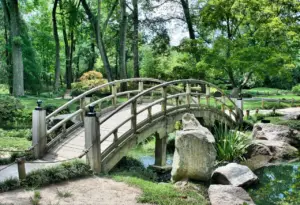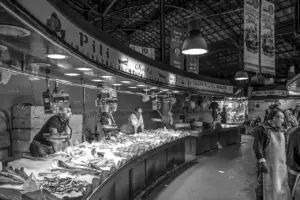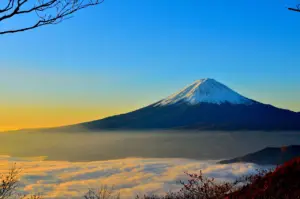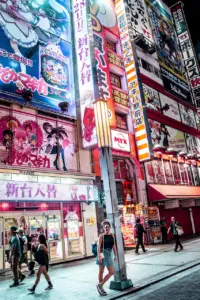Hokkaido, Japan’s northernmost island, is home to some of the finest sake breweries in the country. Sake, also known as rice wine, is a traditional Japanese alcoholic beverage made from fermented rice. Hokkaido’s unique climate and geographical location provide ideal conditions for growing high-quality rice and brewing exceptional sake.
The art of sake brewing has been practiced in Japan for over a thousand years, and Hokkaido’s breweries are among the oldest and most respected in the country. Each brewery has its own unique style and techniques, passed down through generations of master brewers.
In this article, we will explore the history and art of sake brewing in Hokkaido, delve into the ingredients that make Hokkaido’s sake so exceptional, and take a tour of some of the best breweries the island has to offer. Whether you are a sake connoisseur or simply curious about Japanese culture and cuisine, Hokkaido’s sake breweries offer a fascinating and delicious experience.
Key Takeaways
- Hokkaido’s ideal climate and geographical location make it a prime location for exceptional sake breweries.
- The quality of sake is determined by the rice, water, and yeast used in the brewing process, with each brewery in Hokkaido having its own unique style and techniques.
- Hokkaido’s pure water sources and selection of high-quality rice strains contribute to the clean and crisp taste of its sake, with the degree of rice polish and strains of koji-kin and shubo-kin also playing a role.
- Visitors to Hokkaido’s sake breweries can witness the entire brewing process and taste different varieties of sake, which pairs well with local cuisine and may have potential health benefits.
The History and Art of Sake Brewing
The history and art of sake brewing can be traced back to ancient Japan, where it was considered a sacred ritual and played an integral role in social and religious ceremonies.
Sake is a traditional Japanese rice wine that is made by fermenting rice with a special type of yeast called koji.
The process of sake brewing is a complex and delicate art that requires a great deal of skill and knowledge.
Sake brewing involves several steps, including rice polishing, washing, soaking, steaming, and fermentation.
The quality of sake is determined by the quality of the rice, the water, and the yeast used in the brewing process.
Sake brewers carefully control the temperature, humidity, and other environmental factors to ensure that the sake is of the highest quality.
Sake brewing is not only a traditional craft, but also a form of art that has been passed down through generations of sake brewers.
The Ingredients of Hokkaido’s Sake
The high-quality rice used in Hokkaido’s sake has a significant impact on the final product’s taste and aroma.
Hokkaido’s pure water sources, which are fed by melted snow and ice from the nearby mountains, contribute to the sake’s clean and crisp taste.
Special yeasts, carefully selected and cultured, play a crucial role in the fermentation process, bringing out the unique flavors and aromas of the rice wine.
High-Quality Rice
Superior quality sake begins with the careful selection of the finest rice grains, which are meticulously polished to remove impurities and reveal the sweet, starchy core that is essential for creating the complex flavors and aromas that define Hokkaido’s best breweries.
Hokkaido’s brewers have long been known for their dedication to using only the highest quality rice, which is why they are often regarded as some of the best sake producers in the world.
The selection of rice is a crucial component of sake brewing, as the starch content and degree of polish directly influence the final product.
Hokkaido’s brewers typically use strains of rice that are high in starch and low in protein, as this creates a sweeter, more delicate flavor.
Additionally, the rice is polished to varying degrees, with the outer layers removed to expose the core starch. The degree of polish can range from 30% to 70%, with the higher polished rice creating a more refined and complex taste.
By using only the finest rice grains, Hokkaido’s brewers are able to create a sake that is both delicious and unique.
-
The meticulous process of selecting the highest quality rice grains demonstrates the dedication and passion of Hokkaido’s sake brewers.
-
The careful polishing of the rice to reveal the sweet core shows the attention to detail that is required to create a truly exceptional sake.
-
The use of specialized rice strains and varying degrees of polishing highlights the complexity and artistry involved in the sake brewing process.
Pure Water Sources
An essential aspect of producing high-quality sake is the utilization of pure water sources that possess the necessary qualities to enhance the flavor and aroma of the final product.
Hokkaido, Japan’s northernmost island, is known to have some of the best water sources for sake brewing. The island’s water is sourced from abundant natural reserves, including snowmelt and underground aquifers. The water contains high amounts of minerals such as potassium, calcium, and magnesium, which are essential for yeast growth and the production of amino acids that contribute to the sake’s unique flavor profile.
The quality of water can also affect the texture and mouthfeel of the sake. Hokkaido’s water is known for its softness, which is due to its low mineral content and a slightly acidic pH level. The softness of the water helps to create a smooth and balanced sake, without any harsh or overpowering flavors.
The use of pure water sources is just one of many factors that contribute to the high-quality sake produced in Hokkaido’s sake breweries.
Special Yeasts
One critical aspect of sake production is the utilization of unique yeast strains that contribute to the final product’s distinct flavor and aroma. In Hokkaido, some breweries use special yeasts that have been cultivated over generations to produce the finest rice wine. These yeasts are carefully selected and propagated to ensure consistency in quality and taste.
The yeast strains used in sake production are classified into two categories: koji-kin and shubo-kin. Koji-kin is the primary yeast used in the first step of sake production, which involves the conversion of rice starch into sugar. Shubo-kin, on the other hand, is used in the second stage of fermentation, where the sugar is converted into alcohol.
The unique combination of koji-kin and shubo-kin strains used in each brewery contributes to the distinct flavor and aroma of their sake. Some breweries even use wild yeasts that they have captured from the environment, which further adds to the complexity of their rice wine.
Overall, the use of special yeasts is an essential part of Hokkaido’s sake production, resulting in a rich diversity of flavors and aromas that reflect the region’s unique terroir.
Exploring Hokkaido’s Best Sake Breweries
Hokkaido’s sake breweries offer a unique opportunity to explore the rich history and culture of rice wine production in Japan. In Hokkaido, the northernmost island of Japan, the cold and snowy climate provides ideal conditions for sake brewing. The region is known for its high-quality rice and pure water, which are essential ingredients in making sake. Hokkaido’s sake breweries are also known for using traditional methods and techniques passed down from generation to generation.
Visitors to Hokkaido’s sake breweries can witness the entire process of sake brewing, from the polishing of the rice to the fermentation and aging of the sake. They can also taste and compare different varieties of sake, each with its unique flavor profile. The table below showcases some of the best sake breweries in Hokkaido, their location, and the types of sake they produce. Hokkaido’s sake breweries are a must-visit for anyone interested in Japanese culture and the art of sake brewing.
| Brewery Name | Location | Types of Sake | ||||
|---|---|---|---|---|---|---|
| Asahi Shuzo | Otaru | Junmai, Honjozo, Ginjo | ||||
| Kirin Brewery | Ebetsu | Junmai, Honjozo, Daiginjo | ||||
| Takasago Shuzo | Asahikawa | Junmai, Honjozo, Daiginjo | Dassai Brewery | Yamaguchi | Junmai Daiginjo, Ginjo, Nigori |
Sake Pairing with Hokkaido’s Local Cuisine
Pairing sake with Hokkaido’s local cuisine provides a unique dining experience that highlights the flavors of both the food and the sake. Hokkaido is known for its fresh seafood, dairy products, and vegetables, all of which pair well with the distinct flavors of sake. The umami flavors of sake complement the rich flavors of seafood, while the acidity of sake cuts through the richness of dairy products. Sake also enhances the flavors of vegetables, making it a versatile drink that can pair well with a range of dishes.
When pairing sake with Hokkaido’s local cuisine, it is important to consider the type of sake. Junmai sake, for example, is a good match for rich and flavorful dishes, such as grilled seafood or meat, while Ginjo sake pairs well with lighter dishes, such as sashimi or vegetables. Additionally, the temperature at which sake is served can also affect its flavor profile. Warmer sake brings out the umami flavors, while colder sake highlights the acidity and freshness.
Overall, pairing sake with Hokkaido’s local cuisine is a unique experience that showcases the versatility and complexity of sake as a drink.
The Health Benefits of Sake
Sake, a traditional Japanese rice wine, is known not only for its distinct flavor but also for its potential health benefits.
One of the key benefits of sake is its antioxidant and anti-inflammatory properties, which are believed to help protect against various diseases and reduce inflammation in the body.
Additionally, sake is considered a low-calorie beverage and is naturally gluten-free, making it a suitable option for those with dietary restrictions.
Antioxidant and Anti-Inflammatory Properties
Studies have shown that the consumption of sake, due to its high levels of antioxidants and anti-inflammatory properties, may provide various health benefits. Antioxidants are substances that protect cells against free radicals, which can cause damage and lead to the development of chronic diseases such as cancer, heart disease, and Alzheimer’s disease. Sake contains antioxidants such as polyphenols and flavonoids, which are believed to have a protective effect on the body.
In particular, research has shown that sake polyphenols can inhibit the growth of cancer cells and reduce the risk of developing certain types of cancer. In addition to its antioxidant properties, sake also has anti-inflammatory properties. Chronic inflammation is associated with the development of many diseases, including heart disease, arthritis, and diabetes.
Sake contains a compound called ferulic acid, which has been shown to have anti-inflammatory effects in the body. It works by reducing the production of inflammatory molecules and improving the function of antioxidant enzymes. This suggests that consuming sake may help to reduce the risk of developing chronic diseases by reducing inflammation in the body. However, more research is needed to fully understand the health benefits of sake and the optimal amount to consume for these benefits.
Low Calorie and Gluten-Free
One notable characteristic of sake is its low calorie content, making it a potential option for those looking to limit their caloric intake while still enjoying an alcoholic beverage. Sake is made by fermenting rice, and the brewing process does not involve any added sugars or fats. As a result, a typical serving of sake contains only about 100-150 calories, which is much lower than other alcoholic beverages such as beer or mixed drinks.
In addition to being low in calories, sake is also gluten-free. This is because the fermentation process does not involve any wheat or barley, which are the primary sources of gluten in most alcoholic beverages. For individuals with gluten sensitivities or celiac disease, sake can be a great alternative to beer or other grain-based alcohols. The table below provides a comparison of the calorie and gluten content of sake with other common alcoholic beverages.
| Beverage | Calories per serving | Gluten-free? |
|---|---|---|
| Sake | 100-150 | Yes |
| Beer | 150-250 | No |
| Wine | 120-150 | No |
| Vodka | 100-120 | Yes |
Overall, the low calorie and gluten-free nature of sake make it an appealing option for those looking to enjoy a drink without compromising their dietary restrictions or goals. Additionally, the unique brewing process and flavor profiles of different sake varieties offer a rich and enjoyable drinking experience.
Sake and Japanese Culture
The traditional Japanese tea ceremony involves the consumption of sake in a slow, deliberate manner, savoring each sip alongside small, delicate sweets. This act of consuming sake is deeply rooted in Japanese culture and tradition. The Japanese have long embraced the art of sake-making as a symbol of their identity and heritage. It is no surprise, therefore, that sake is a common feature in many Japanese cultural celebrations, ranging from weddings to religious ceremonies.
Sake is not just a drink in Japan; it is an integral part of the country’s cultural fabric. Its production involves a meticulous process that has been handed down from generation to generation. The unique combination of water, rice, yeast, and koji, a mold used in the fermentation process, gives each type of sake its own distinctive flavor and aroma.
Savoring sake is a sensory experience that transcends the palate. It evokes a sense of nostalgia, tradition, and pride in the Japanese identity. So if you’re looking to immerse yourself in Japanese culture and tradition, indulging in the country’s finest sake is a great place to start.
- The aroma of sake can transport you to a Japanese countryside, with its rice paddies and tranquil scenery.
- The smooth texture of sake can invoke a sense of calm and relaxation, reminiscent of a traditional Japanese hot spring.
- The umami taste of sake can awaken your taste buds, leaving a lingering sensation that is both satisfying and comforting.
- The act of sharing sake with others can create a sense of community and camaraderie, as it is often served in small, communal cups.
Frequently Asked Questions
How long does it take to brew sake?
Sake brewing is a complex and time-consuming process that involves several stages. The production of sake begins with the polishing of rice, which removes the outer layers of the grain and exposes the starchy center.
The polished rice is then washed and soaked to absorb water and soften the grains. The rice is then steamed and cooled before it is mixed with koji, a mold that converts the rice starch into sugar.
The resulting mixture is called the moromi, which is left to ferment for several weeks. During the fermentation process, the yeast converts the sugar into alcohol, and the moromi is stirred and monitored to ensure a consistent and high-quality product.
The length of time required to brew sake can vary, depending on the type of sake and the desired flavor profile. However, on average, the entire brewing process can take anywhere from 30 to 60 days.
What is the alcohol content of Hokkaido’s sake?
The alcohol content of sake can vary depending on the type of sake and the brewing process. Generally, sake has an alcohol content ranging from 15% to 20%. However, some premium sakes may have a higher alcohol content of up to 23%.
Hokkaido, the northernmost island of Japan, is known for producing high-quality sake due to its cold climate and high-quality rice. The alcohol content of Hokkaido’s sake can vary depending on the brewery and type of sake produced.
It is important to note that the alcohol content of sake should be consumed responsibly, as it can have a significant impact on one’s health and well-being.
Are there any vegetarian or vegan options available at Hokkaido’s sake breweries?
Regarding the availability of vegetarian or vegan options at Hokkaido’s sake breweries, it is important to note that traditional sake brewing involves the use of koji, a type of mold that is grown on steamed rice. As a result, most sake breweries in Japan do not produce vegan sake.
However, some modern breweries have begun experimenting with alternative methods, such as using koji grown on non-rice substrates like soybeans or wheat. It is recommended to inquire directly with each brewery about their production methods and the availability of vegetarian or vegan options.
Additionally, it should be noted that many sake breweries also offer food pairings or snacks that may not be suitable for vegetarians or vegans, so it is advisable to check the menu beforehand.
Can you bring your own food to enjoy with sake tastings?
Bringing outside food to enjoy with sake tastings is generally not allowed at Hokkaido’s sake breweries. This is due to the fact that sake tasting is considered a formal event and the focus is on the unique flavors and characteristics of the sake being sampled.
Bringing outside food may interfere with the tasting experience and detract from the appreciation of the sake. Additionally, the breweries often have their own food offerings or partnerships with local restaurants to provide food options that complement their sake.
Visitors are encouraged to try these food pairings, which have been carefully curated to enhance the taste of the sake being sampled. Overall, while bringing outside food may not be allowed, visitors can still enjoy a full and satisfying experience of Hokkaido’s best sake by trying the food pairings offered at the breweries.
What is the best time of year to visit Hokkaido’s sake breweries?
The best time of year to visit Hokkaido’s sake breweries largely depends on personal preferences and interests. For those interested in a winter wonderland experience, visiting during the winter months (December to February) is highly recommended as Hokkaido is known for its snowy landscapes and winter festivals. However, it is important to note that some breweries may be closed during this time due to the harsh weather conditions.
Alternatively, visiting during the spring (March to May) or autumn (September to November) seasons can provide a beautiful backdrop of cherry blossoms or fall foliage, respectively. It is also worth considering the specific brewery’s production schedule and events calendar as some may have limited or specific visiting hours. Ultimately, researching and planning ahead can ensure a successful and enjoyable visit to Hokkaido’s sake breweries.
Conclusion
In conclusion, the art of sake brewing is deeply rooted in Japanese culture and has been passed down through generations. Hokkaido, with its rich natural resources and pristine water, has become a hub for some of the finest sake breweries in Japan.
The ingredients used in brewing – rice, water, yeast, and koji – are carefully selected and combined to create a delicate balance of flavors and aromas.
Exploring Hokkaido’s best sake breweries provides a unique opportunity to taste the finest rice wine and learn about the region’s brewing traditions. Pairing sake with Hokkaido’s local cuisine enhances the dining experience, as the flavors complement each other.
Additionally, the health benefits of sake make it a popular choice among the health-conscious. Its low alcohol content, high levels of antioxidants, and amino acids make it a healthier alternative to other alcoholic beverages.
In conclusion, the significance of sake in Japanese culture cannot be overstated. Its brewing process is an artform that has been perfected over centuries. Hokkaido’s sake breweries offer a glimpse into this rich cultural tradition and an opportunity to savor some of the best sake in Japan. With its health benefits and versatility in pairing with food, sake is a beverage that is here to stay.




















































































